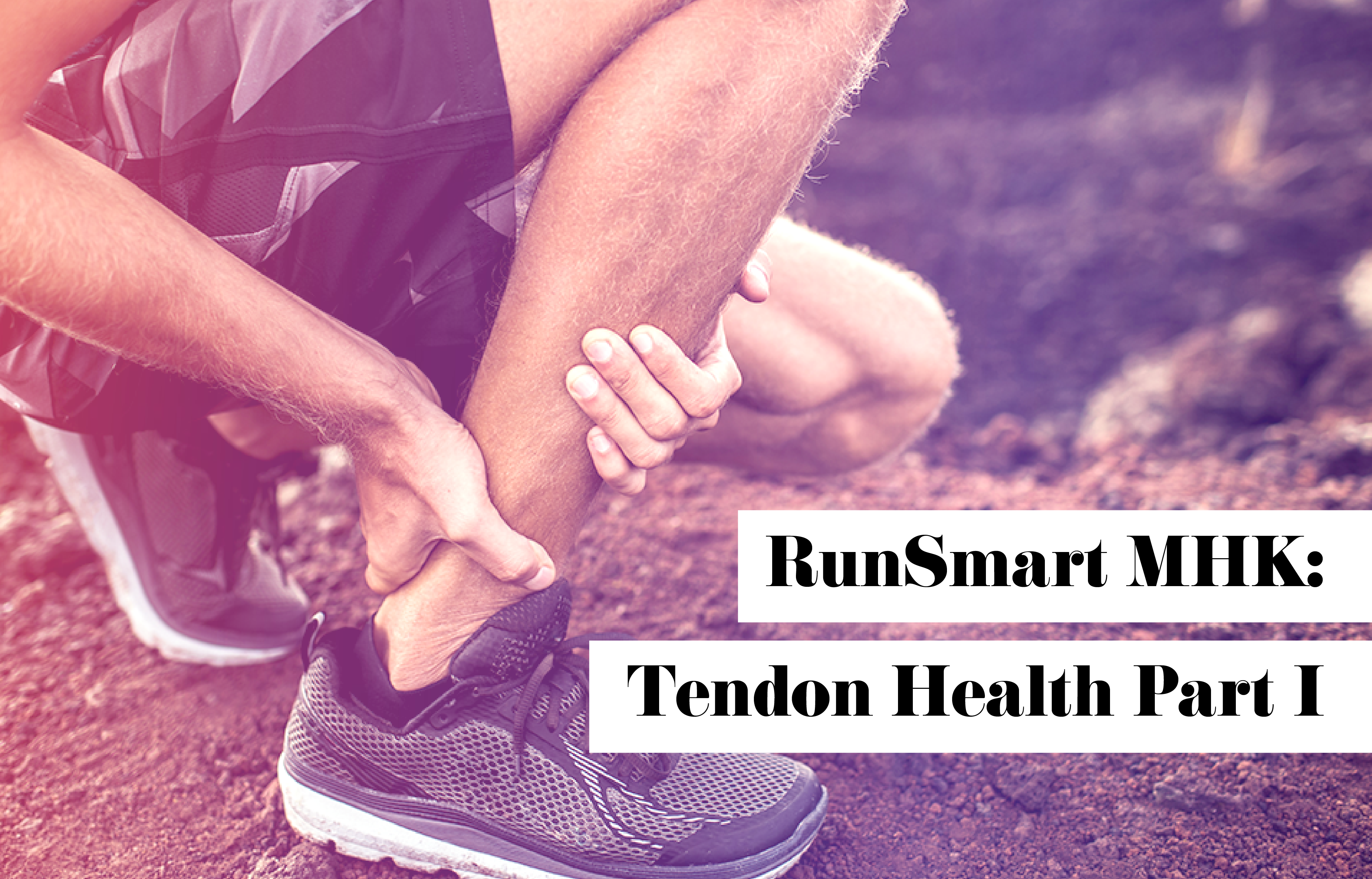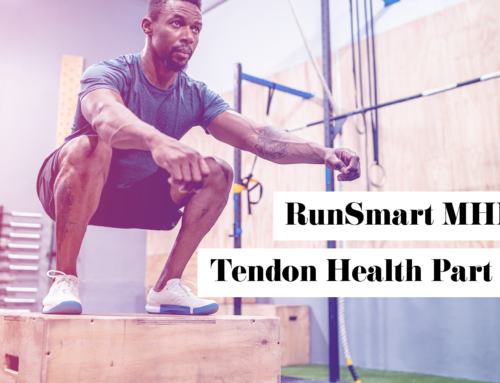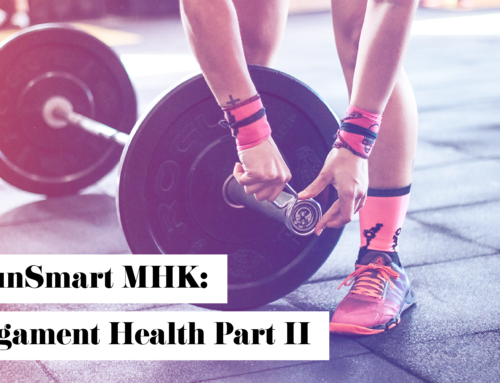Tendon Health Part I
Brenton Leighow, MS, CSCS, GFS,
Maximum Performance Personal Trainer
Welcome back again to our RunSmart MHK blog series! This next round of posts will cover tendons and ligaments. Let’s start off by discussing what these are. Tendons are connective tissue that attaches muscle to bone. Ligaments are connective tissue that connects bones to other bones. Now, let’s look at how these tie into running.
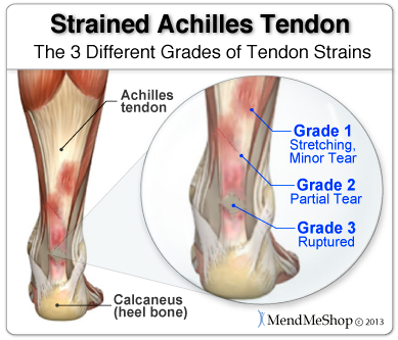
Tendons are very similar to muscles; they can be easily damaged. It’s not uncommon for a runner to experience a strain or tendonitis. Both of these can leave you sidelined from your big race or can happen during it. A strain occurs when you pull fibers apart, either in the muscle or the tendon. For this post, we’ll focus on the tendon. Strain are graded on a scale of 1 to 3. A grade 1 means you’ve experienced a minor tear or stretch that exceeds what the tendon can handle. A grade 2 means you’ve partially torn your tendon, but it’s still in one piece. Lastly, a grade 3 means you’ve completely torn your tendon into two pieces. In an analysis of 37 studies (>370 subjects), the mean time to returning to a pre-injury level of competition was 6 months (3). We want to do everything we can to avoid that recovery process! (1. “Strained Achilles Tendon)
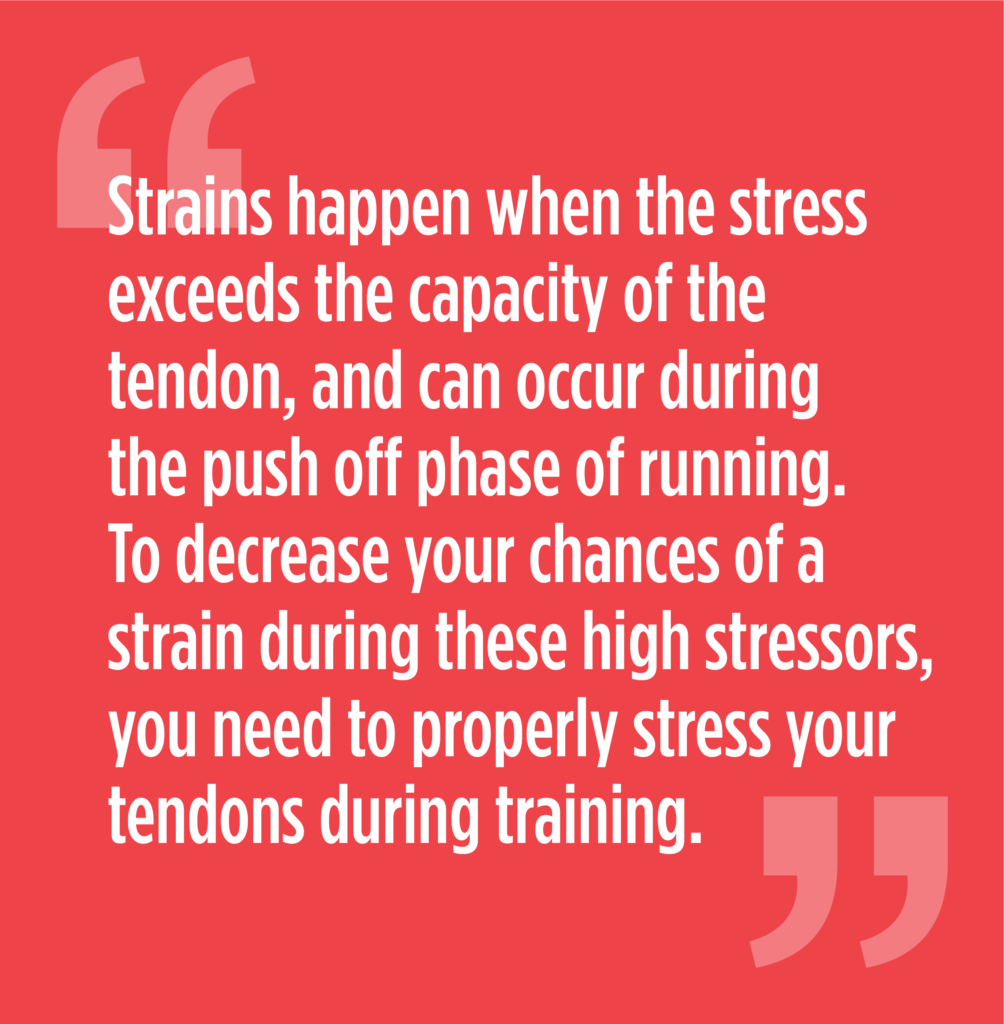 Straining a tendon is something you might experience if you’re running for a distance further than you’ve trained for, or during a maximum sprint to the finish line. Strains happen when the stress exceeds the capacity of the tendon, and can occur during the push off phase of running. At this time, your Achilles tendon experiences forces that are 6 to 8 times your bodyweight (2). So, for a 150 pound runner, there’s potentially 1,200 pounds of force going through his or her Achilles tendon during the push off phase. To decrease your chances of a strain during these high stressors, you need to properly stress your tendons during training. While no training method can guarantee that you won’t experience a strain, the implementation of strength and plyometric training has been proven to decrease the odds of an injury. A 2021 meta analysis stated that strength training was the most effective protocol for reducing overuse injuries, and that plyometric training showed significant improvements in running economy.
Straining a tendon is something you might experience if you’re running for a distance further than you’ve trained for, or during a maximum sprint to the finish line. Strains happen when the stress exceeds the capacity of the tendon, and can occur during the push off phase of running. At this time, your Achilles tendon experiences forces that are 6 to 8 times your bodyweight (2). So, for a 150 pound runner, there’s potentially 1,200 pounds of force going through his or her Achilles tendon during the push off phase. To decrease your chances of a strain during these high stressors, you need to properly stress your tendons during training. While no training method can guarantee that you won’t experience a strain, the implementation of strength and plyometric training has been proven to decrease the odds of an injury. A 2021 meta analysis stated that strength training was the most effective protocol for reducing overuse injuries, and that plyometric training showed significant improvements in running economy.
We’ll cover what plyometrics consist of in detail, how they are performed and how they help to improve tendon capacity in our next post. If you have any questions, don’t hesitate to reach out to our RunSmart MHK team! We’re always happy to explain everything in further detail and help in any way we can.
Citations
- MendMeShop. (n.d.). Sprains and strains: What’s the difference? Achilles Tendon Strain vs Sprain. Retrieved March 30, 2022, from https://aidmyachilles.com/achilles-tendonitis-injury/achilles-tendon-sprain-vs-strain.php
- “Essentials of Strength Training and Conditioning (Fourth Edition). Human Kinetics”
Haff, Triplett, N. T., & National Strength & Conditioning Association. (2016). - Zellers, Jennifer A et al. “Return to play post-Achilles tendon rupture: a systematic review and meta-analysis of rate and measures of return to play.” British journal of sports medicine vol. 50,21 (2016): 1325-1332. doi:10.1136/bjsports-2016-096106

